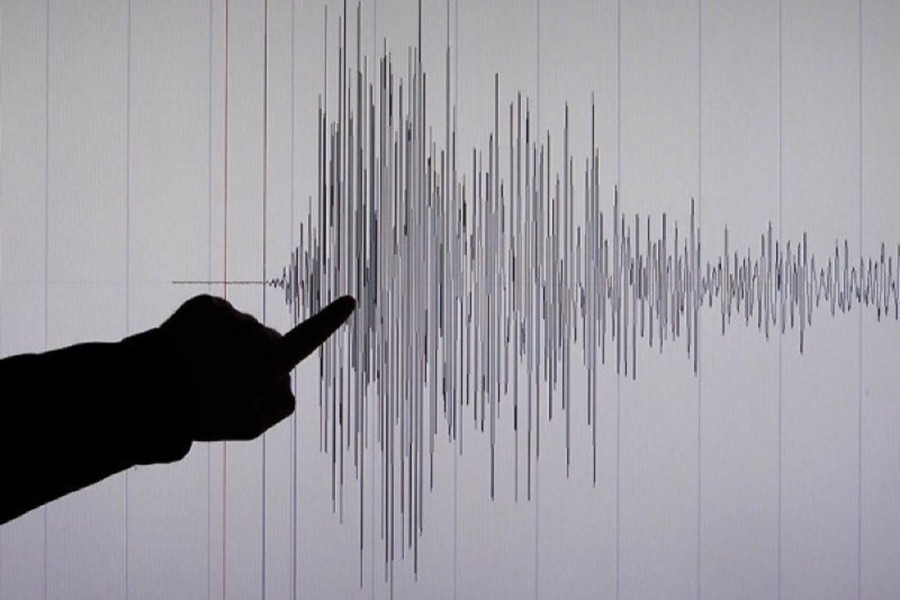The news of the December 5 earthquake jerking Dhaka took many city people by surprise. Majority of the Dhaka residents are now oblivious of the series of earthquakes that shook the capital in consecutive years not long ago. After repeated tremors interspersed with mild quakes in the last decade, there has been a lull for a considerably longer time. The series of mild temblors shook areas ranging from Chattogram, Chattogram Hill Tracts, Sylhet, the surrounding areas, to the greater Dhaka. Thanks to the earthquakes' repeated strikes, many people across the country began bracing for the big one. The series of tremors stopped suddenly.
The natural-disaster-conscious segments may liken the phenomenon of the lull following a series of tremors and temblors to the lull before great natural disasters like hurricanes, cyclones or tsunamis. It's also true that not all calamities are preceded by the smaller ones. They strike all of a sudden, catching the unwitting but vulnerable people unawares. There are few scopes to pass off the December 5 earthquake of 5.2 on the Richter scale as an isolated occurrence. The moot point is the frenetically unplanned way the city of Dhaka is growing, a 6/7 magnitude quake lasting just one minute could leave Dhaka a sordid site of crumpled concrete structures. Seismologists have long reached this conclusion after visiting temblor-struck sites in the cities around the world. According to earthquake experts, this natural calamity is fully unpredictable. A temblor has no fixed time for strikes --- it could be the midnight, an early morning, high noon or a tranquil evening. This is the reason why it's so feared. It doesn't happen with the volcanoes. Even a dormant volcano gives a rumbling sound for a week or a longer time. Tsunamis also take some time before their high waves sweep past the seashores, allowing people to flee and take shelter on higher places. Earthquakes shake a large area including human settlements without any warning.
The reason why the Bangladesh cities should dread the temblors is their population density, the unplanned urbanisation including road planning. Thanks to these impediments, even a mild earthquake may wreak havoc with the cityscapes of Dhaka, Chattogram, Sylhet and Rajshahi. Parts of Rajshahi were fully devastated by the Great Assam-Bengal Earthquake in 1897.With skeletal infrastructure in place, the cities of the then Eastern Bengal didn't have to bother much about the quake's brunt. Still many office buildings in Dhaka collapsed, roads caved in and the Buriganga water overflew the river's banks. In the 21st century Dhaka, the impact of a major earthquake is feared to be terrible. In place of the look of a sprawling and spacious city 70 years back, it now gives the look of a concrete maze. Arrogantly built multi-storey high-rise buildings block the views in every direction. The number of roads through these tall buildings is too inadequate to allow movement of fully equipped fire-brigade and civil defence vehicles at a time.
After the strike of a temblor at night, with electricity lines disconnected, underground pipes gushing out water and spewing out gas, there may be no escape route for the panic-stricken screaming people in the dense localities. In the melee ofpeople fleeing an infernal scene, hundreds are feared to become victims of stampede.
The strongly built flyovers may absorb the quake shocks. Those constructed sloppily may not. The same is applicable to the concrete bridges on the city outskirts. This is how the metropolitan city may have to pay the price for its sick competition of soaring higher than the others. In order to avert these life-threatening adversities, the nation ought to remain always prepared to face post-quake scenarios. After casualties and injuries, the second phase of challenge crops up. It centres round full-scale rescue and relief operations. Rescuing near-dead people from the rubble of concrete and piles of hard objects are a common feature in earthquake spots. These emergencies necessitate the rushing in of skilled rescue workers and proper equipment to do the rescue job. In the Bangladesh capital, the fire service squads have earned plenty of kudos in successfully dealing with a few infernal blaze incidents lately. But the Bangladesh Fire Service & Civil Defence brigades are yet to prove their ability sufficiently. It's because any catastrophic earthquake is yet to hit Dhaka. According to the rescue operation experts, what are needed urgently to cope with the messy and panicky situation after a temblor comprise heavy machinery like mini-cranes, ladders etc. As per the media disclosures, the country's civil defence authorities are poorly equipped, with most of the units lacking even the primary tools like mechanised ladders. This is unconscionable.
During the days of the repeated small earthquakes a couple of decades ago, the issue of the ill-equipped fireservice and civil defence department came to the fore in newspaper write-ups and TV talk shows. The authorities concerned back then came up with the assurance that the department would receive adequate funds to procure the essential tools and equipment necessary for coping with earthquake emergencies. No remarkable progress has been seen till now. Apart from the individual and community-level disasters, the earthquakes suck in its vortex of destruction the basic identities and the pride of nations. Among them, the bruised national economic ambitions and social equilibriums stand supreme.


